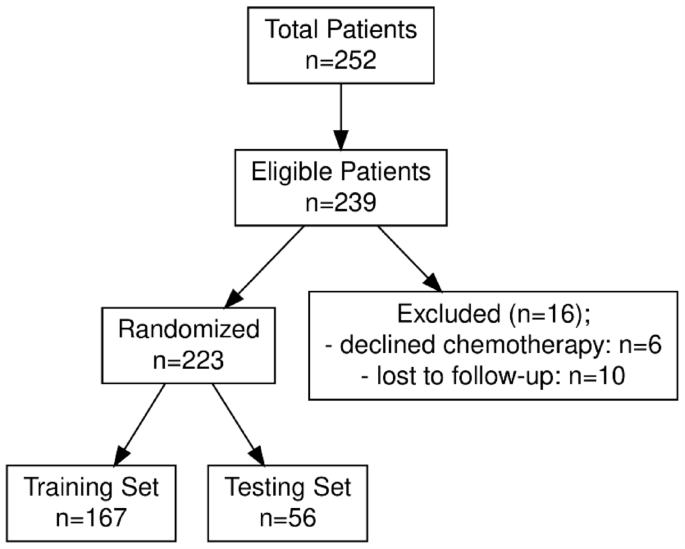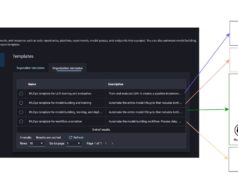Researchers have developed a machine learning model that can predict one-year survival in angioimmunoblastic T-cell lymphoma (AITL) patients. Angioimmunoblastic T-cell lymphoma is a rare, often aggressive form of peripheral T-cell lymphoma, and despite advancements in understanding AITL biology and development of novel treatment strategies, prognosis for AITL patients remains poor.
This predictive tool offers clinicians a data-driven approach to stratify patient risk and guide personalized treatment decisions.
The Study: Methodology and Results
Researchers analyzed data from 223 AITL patients across four Chinese medical centers, comparing five different machine learning algorithms using 16 baseline clinical and laboratory characteristics. The CatBoost algorithm emerged as the top performer, achieving an Area Under the Curve (AUC) of 0.8277.
Through Recursive Feature Elimination (RFE), the research team identified eight key variables from the original 16 characteristics that could maintain excellent predictive power with an AUC of 0.8125. This simplified model makes clinical implementation more practical.
Key Technical Details
- Study Population: 223 newly diagnosed AITL patients from four Chinese centers
- Data Period: 2012-2023
- Primary Algorithm: CatBoost (outperformed XGBoost, Random Forest, and other models)
- Model Interpretation: SHAP and LIME used for feature contribution analysis
- Optimal Variables: Eight key predictive factors identified through RFE
- Performance Metric: AUC of 0.8125 (strong predictive discrimination)
Clinical Application: How the Model Works
The prediction model uses a structured clinical workflow:
- Data Collection: Gather baseline clinical and laboratory data from newly diagnosed AITL patients
- Model Input: Enter the eight key variables into the CatBoost model
- Risk Stratification: Receive predicted probability of one-year overall survival
- Feature Interpretation: Use SHAP and LIME to understand which factors most influenced the prediction
- Clinical Decision: Oncologists use predictions to guide treatment selection and intensity
Significance for Patient Care
This model addresses a critical clinical need. AITL has poor 5-year overall survival of only 44%, with improved outcomes only among the 13% of patients who receive autologous stem cell transplantation. Early identification of high-risk patients enables:
- Risk Stratification: Distinguish low-risk from high-risk patient subgroups
- Treatment Personalization: Tailor therapy intensity based on predicted survival probability
- Improved Clinical Trials: Better patient selection for new therapeutic approaches
- Resource Allocation: Prioritize intensive treatment for patients most likely to benefit
Important Study Limitations
Critical Considerations
- Retrospective Design: Study analyzed historical data rather than prospective patient enrollment
- Limited Sample Size: 223 patients, though adequate for model development, represents relatively small cohort
- Geographic Specificity: All patients from Chinese centers; generalization to other populations requires validation
- Validation Needed: External validation with independent patient populations essential before widespread clinical use
- Missing Variables: Potential influential factors not captured in the original dataset
Broader Implications for Personalized Oncology
Recent prognostic scoring systems like the AITL score define low-, intermediate-, and high-risk subgroups with 5-year overall survival estimates of 63%, 54%, and 21% respectively, showing improved discriminant power over established prognostic indices. Machine learning approaches complement these clinical scoring systems by identifying complex patterns in patient data.
The use of interpretable models (with SHAP and LIME analysis) represents an important advance—clinicians can understand not just the prediction, but the reasoning behind it, building trust in the model’s recommendations.
Next Steps for Clinical Implementation
- External Validation: Test the model on independent patient cohorts from different geographic regions
- Clinical Integration: Develop user-friendly interfaces for integration into electronic health records
- Prospective Studies: Evaluate whether using the model to guide treatment improves actual patient outcomes
- Ongoing Refinement: Continuously update the model with new data and treatment outcomes
For Patients and Families
If you or a loved one has been diagnosed with AITL, discuss this and other prognostic tools with your oncology team. Predictive models should complement, not replace, thorough clinical evaluation and discussion of treatment options. Your healthcare providers can explain how such tools apply to your specific situation and help you make informed decisions about your care.
Learn More and Contribute to Research
This research contributes to a growing body of work applying machine learning to improve cancer prognosis and treatment. Patients interested in contributing to research validation or learning more about AITL should speak with their oncology team about available clinical trials and research opportunities. Researchers interested in the methodology can access the CatBoost model code on GitHub.




